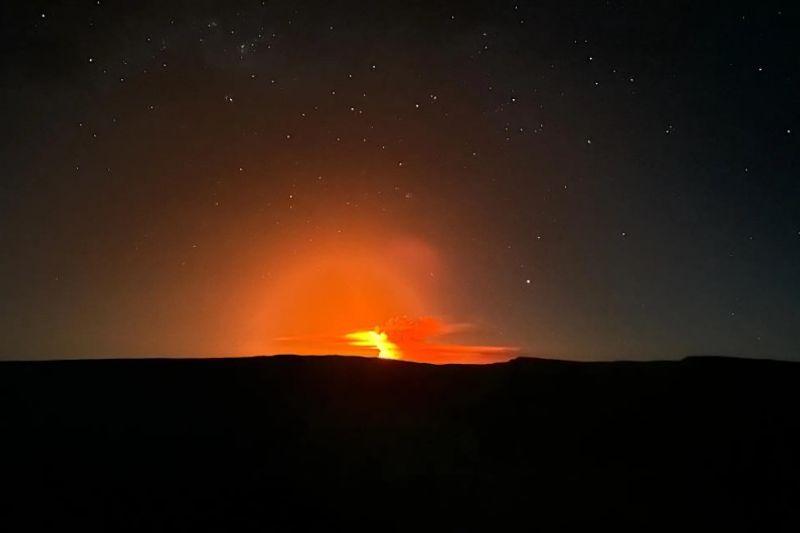The eruption of the La Cumbre volcano on the Galápagos highlights the volcanic nature of the archipelago, with potential risks to unique wildlife such as the giant tortoise Fernanda.
La Cumbre is a young and particularly active volcano. (Galápagos Conservancy)
The Galápagos Islands immediately conjure up images of giant tortoises and Charles Darwin, but there’s one recent event that deserves to be added to this list. This is the eruption of the La Cumbre volcano, which occurred on Saturday night, which brought the volcanic nature of these islands to the fore.
La Cumbre is a shield volcano located on Fernandina Island, and the eruption began on March 2 at around 11:50 pm local time. Lava has begun to flow from the fissure on the volcano’s southeastern flank, creating an illuminating sight in the night sky. A cloud of gas rose up to 2-3 kilometers above the summit, marking the extent of the eruption.
Although the eruption is not over yet, the Geophysical Institute of Ecuador has reported which could exceed in intensity those observed in previous years, such as in 2017, 2018 and 2020. Seismic activity in the area has gradually increased, indicating an accumulation of magma that led to the current eruption.
Fernandina Island has a history of eruptions, with La Cumbre having recorded between 28 and 30 eruptions since 1800, giving it the distinction of having the highest recurrence rate in the archipelago. Fortunately, the island is uninhabited, but its unique fauna raises questions about animal safety during the eruption.
According to the organization Galapagos Conservancy, the current eruption does not pose a significant immediate threat to Galápagos wildlife, despite the potential for sudden changes. However, the presence of unique animals on the island, such as the giant tortoise Fernanda, raises concerns.
Fernanda has been sighted for the first time in 113 years, and her survival is threatened by volcanic activity. Researcher Adalgisa Caccone, an expert in ecology and biological evolution at Yale, pointed out that La Cumbre’s eruptions create insurmountable obstacles for turtles, isolating living areas and threatening their mobility.
The hope is that the giant tortoise and other unique species are safe and can survive this new eruption, which continues to shape the Galápagos landscape.
